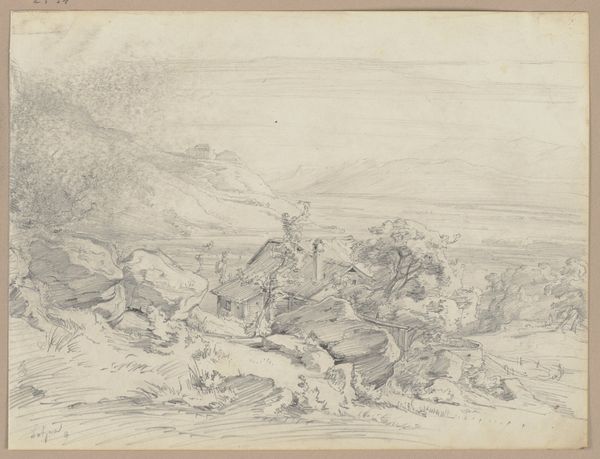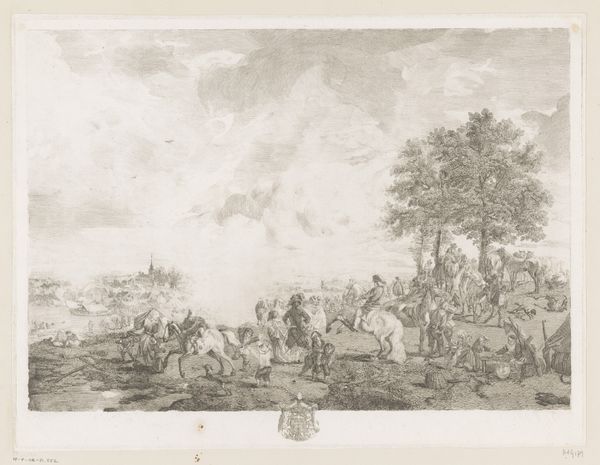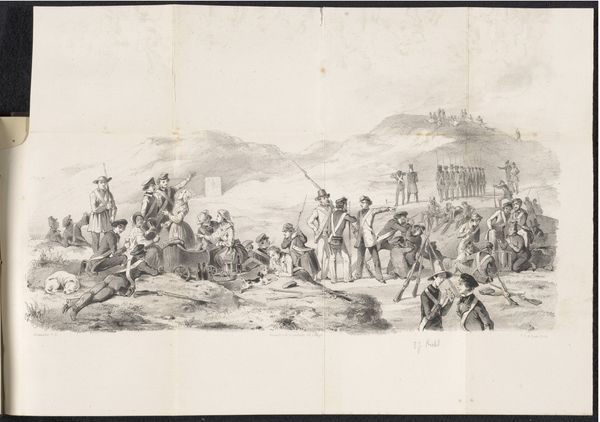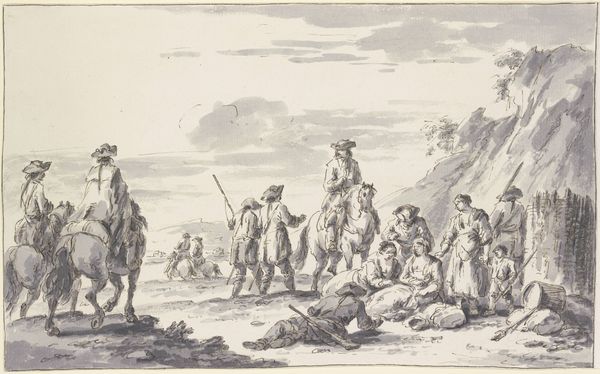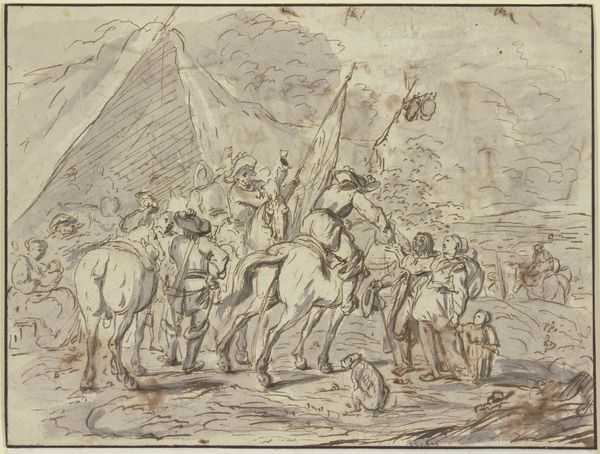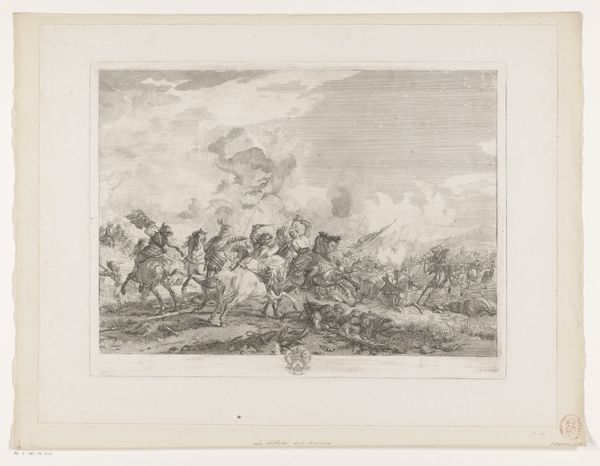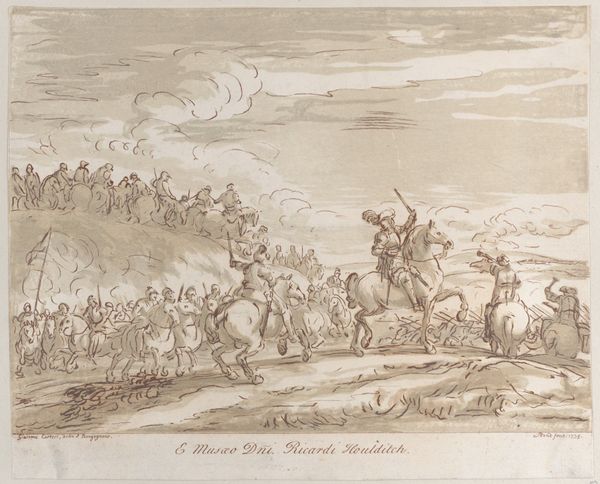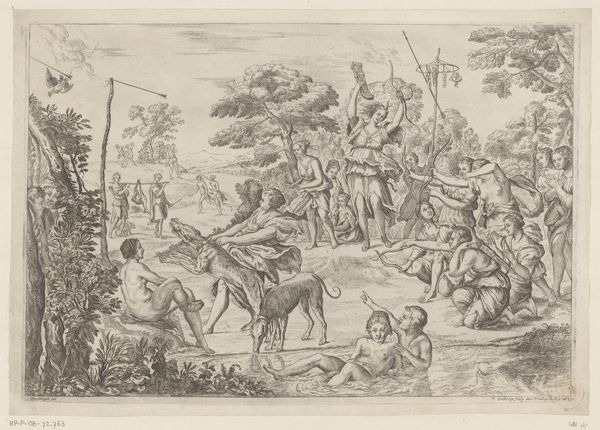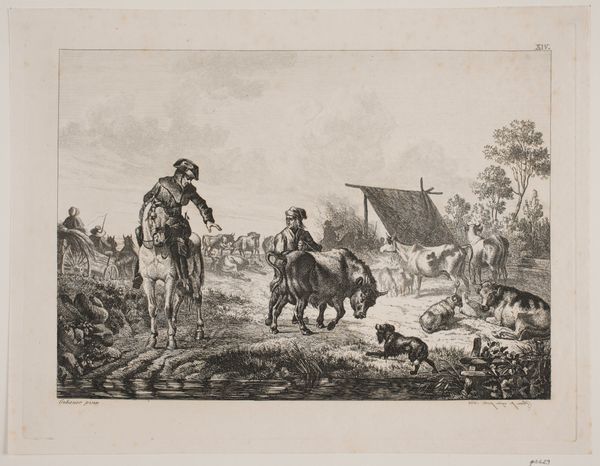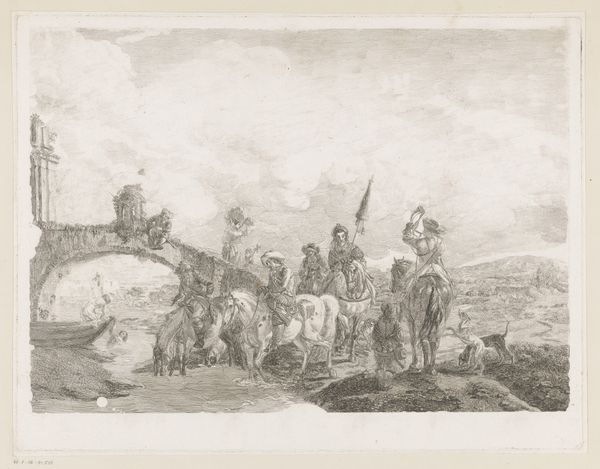
drawing, pencil
#
drawing
#
landscape
#
romanticism
#
pencil
#
genre-painting
#
realism
Dimensions: 204 mm (height) x 262 mm (width) (bladmaal)
Curator: Here we have "Landscape with Riders at a Ferry" by Gustav Schlick, created in 1841. It’s rendered in pencil and drawing and embodies the Romantic style. What are your initial thoughts on the piece? Editor: My first impression is one of transition, a visual pause. There's an overwhelming sense of anticipation, of movement about to happen or just completed. The grayscale rendering enhances this almost ethereal mood. Curator: Absolutely, that sensation of movement stems, I think, from the compositional structure. The distinct diagonal formed by the boat cuts across the static, vertical lines of the forest, generating dynamism and a certain unease. Editor: I see the landscape almost as a stage. The figures grouped near the boat, they have this archetype of figures preparing for a voyage into the unknown, like crossing the River Styx, perhaps a passage into a different realm, a transition from one state of being to another. Curator: That's a fascinating point of view! Considering this in relation to other Romantic period landscape work, though, I'd propose the artist's intentional concentration on detail produces a study of balance. Look at the gradient variations: the solid dark marks used to establish foreground compared against those very pale marks used to portray the mountains in the background. Editor: Perhaps the lighter strokes signify that journey we imagined. The light drawing is how memory functions, a recall that is less crisp, fading with time and the emotion, yes? The figures may suggest qualities of a warrior-like ethos—ready to act when danger looms or honor demands. Curator: It's interesting how Schlick balances realist depiction and what many viewers identify today as romantic idealization. But I also consider what this communicates to his immediate audience. Perhaps it is designed to spark feelings for a very new type of emerging national identity at the time. Editor: Considering its function within that specific historical lens gives it an altogether heightened layer. These crossings represent the passage from one historical stage into another, with potential conflict and transformation suggested through the warriors on horses and subtle tonal imbalance. Curator: Seeing how his approach to visual arrangement, use of medium, and compositional balance intersect with romantic representations to establish emotional symbolism gives a lot to reflect upon! Editor: Indeed! The symbols that artists embed carry lasting meaning. Looking back through Schlick’s symbolic treatment has created more understanding and feeling for its initial construction and lasting cultural effect.
Comments
No comments
Be the first to comment and join the conversation on the ultimate creative platform.
